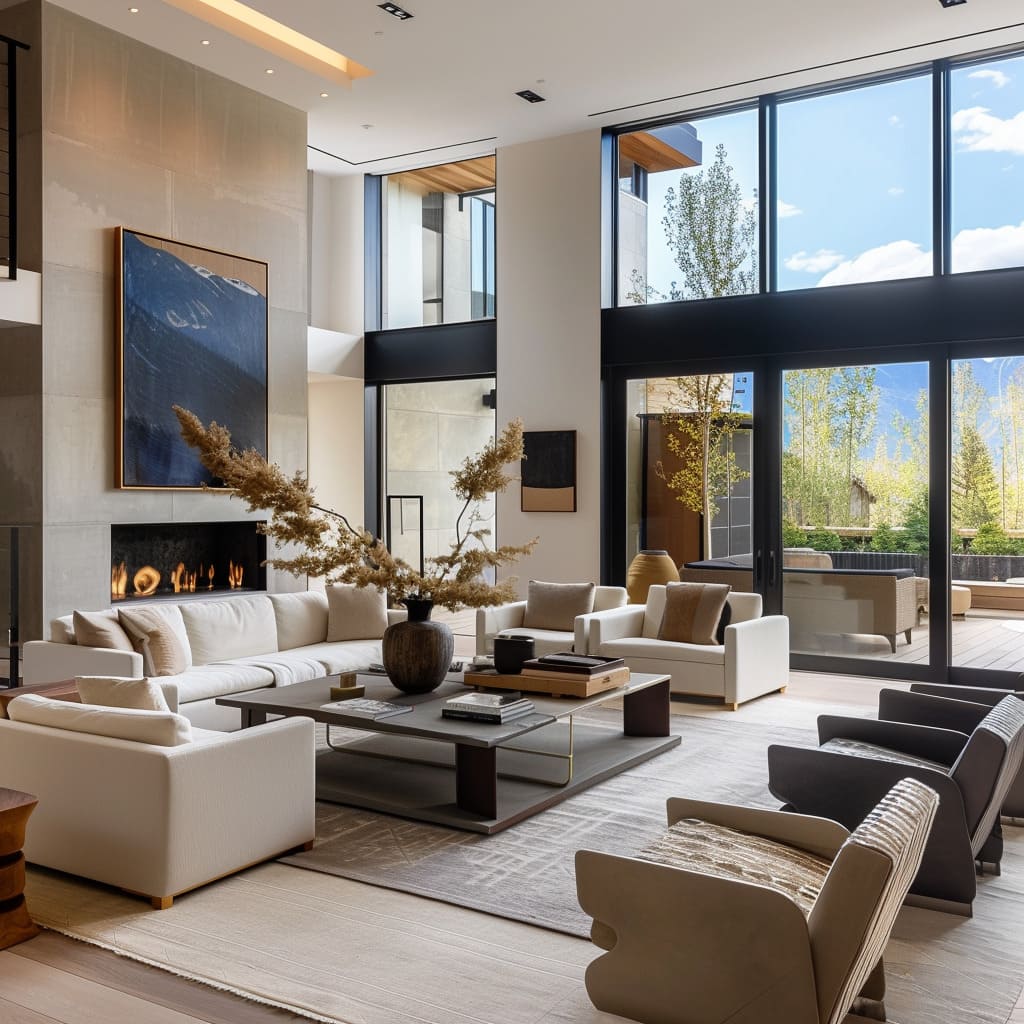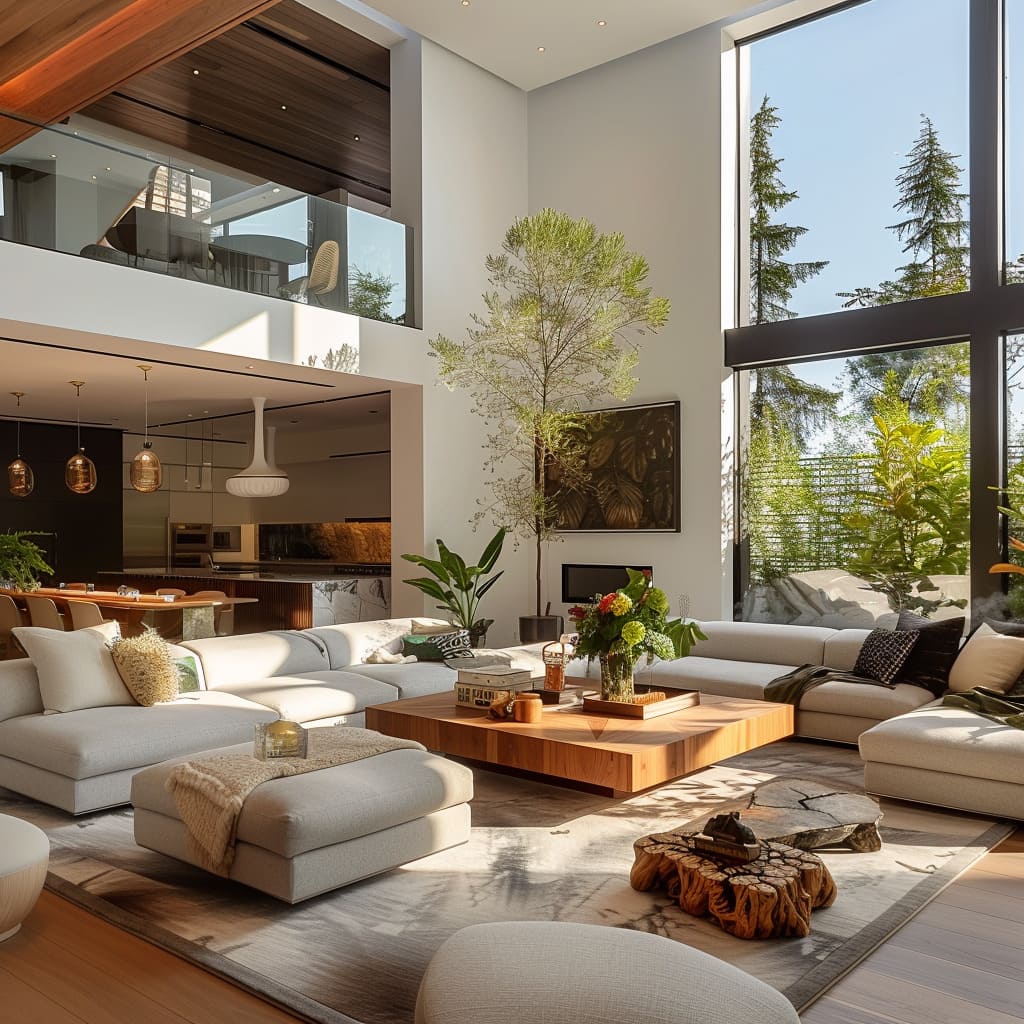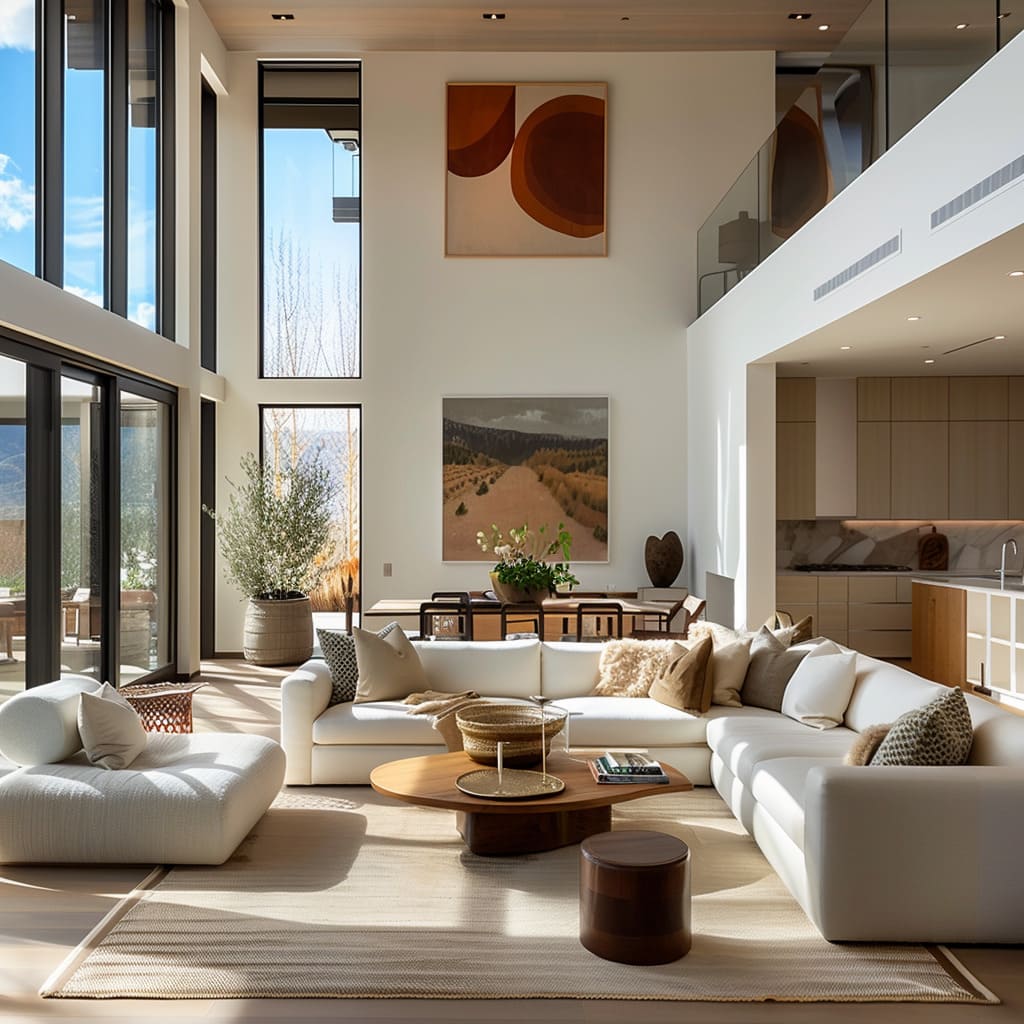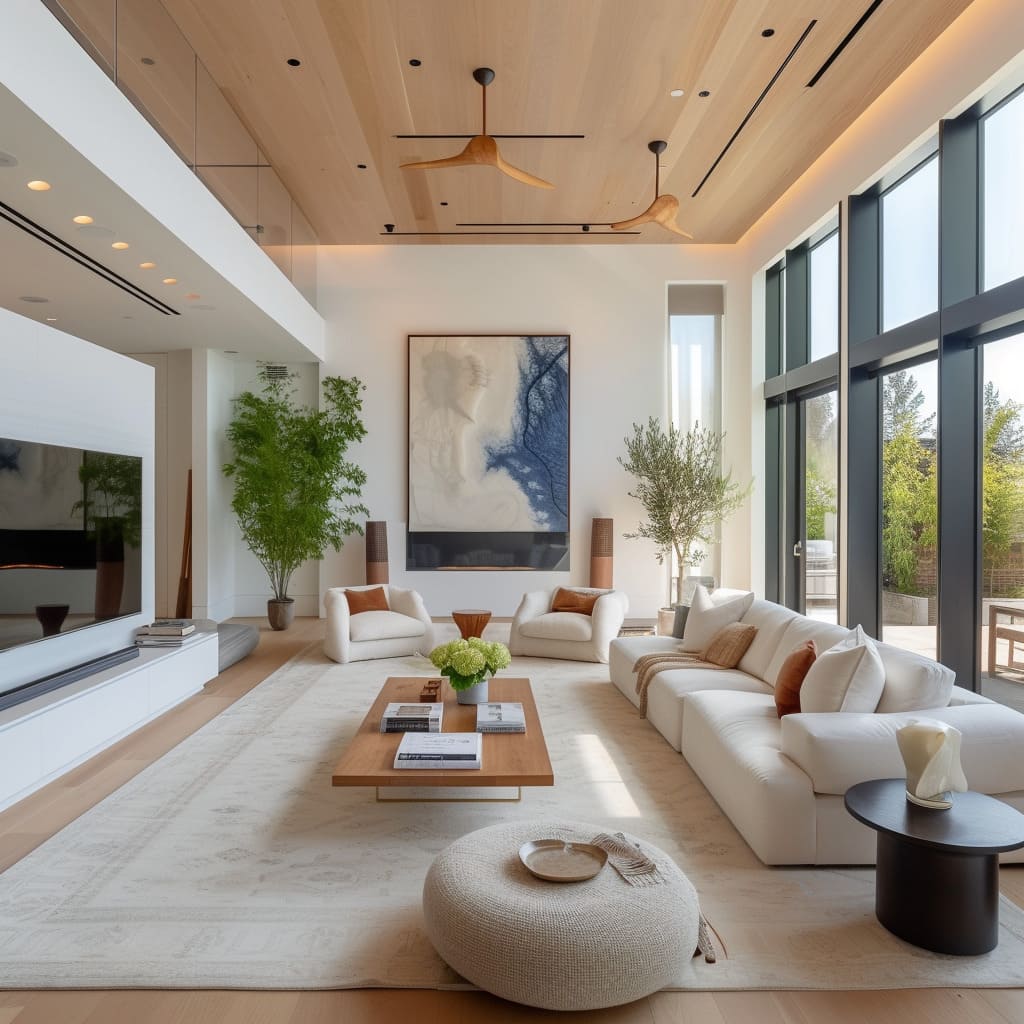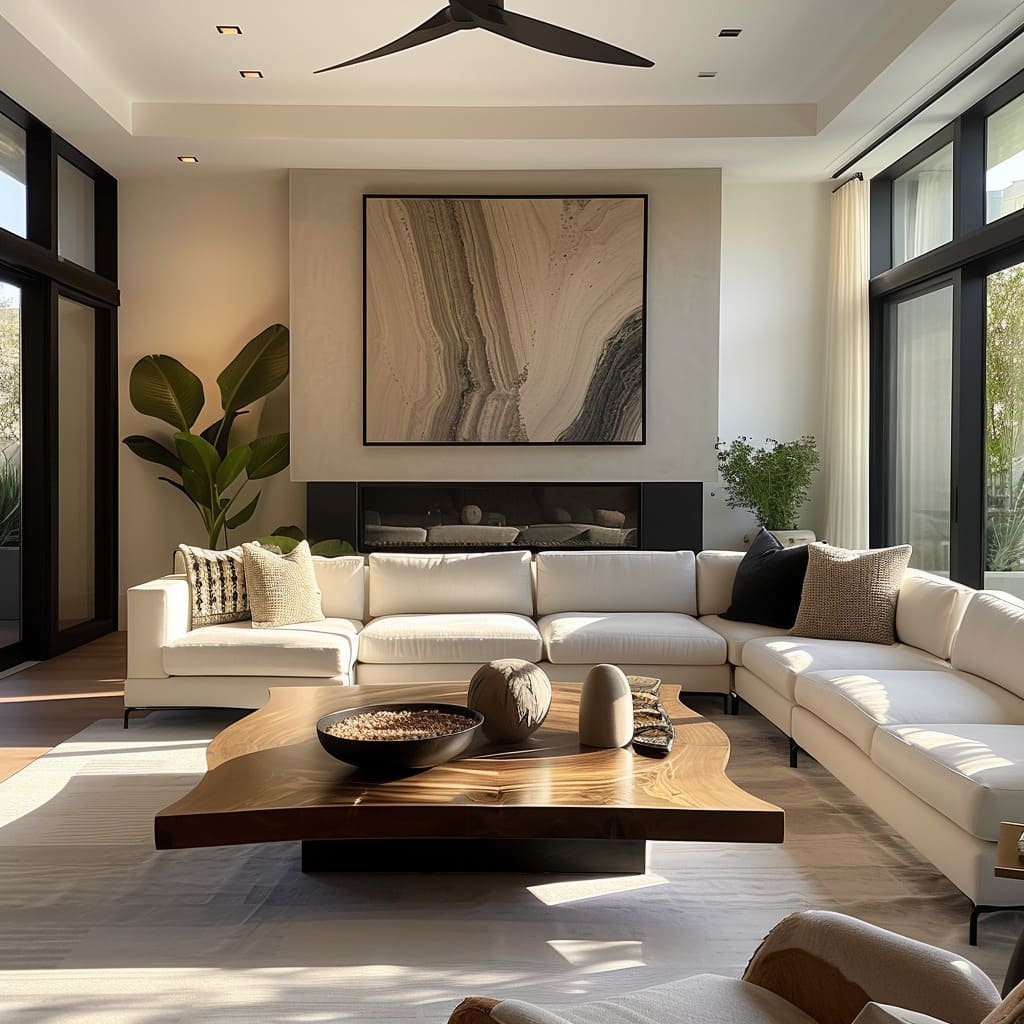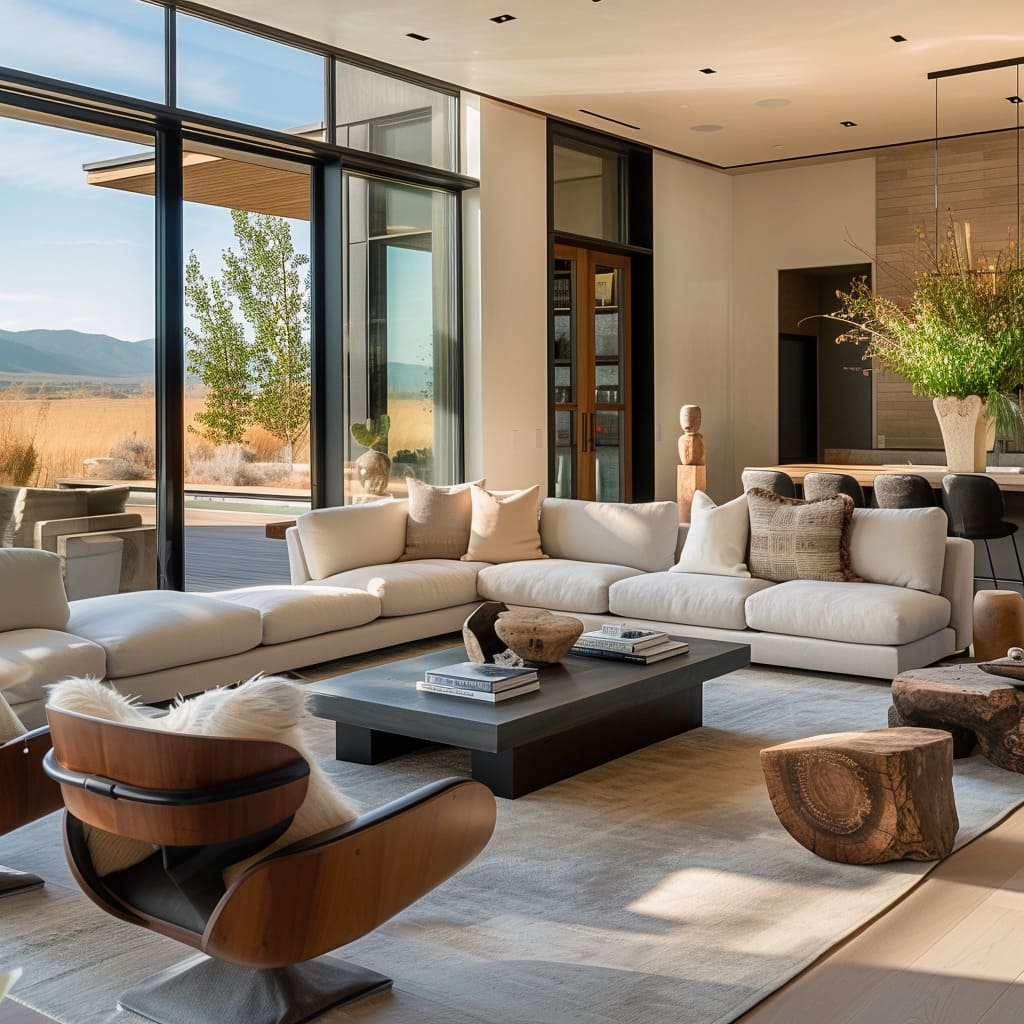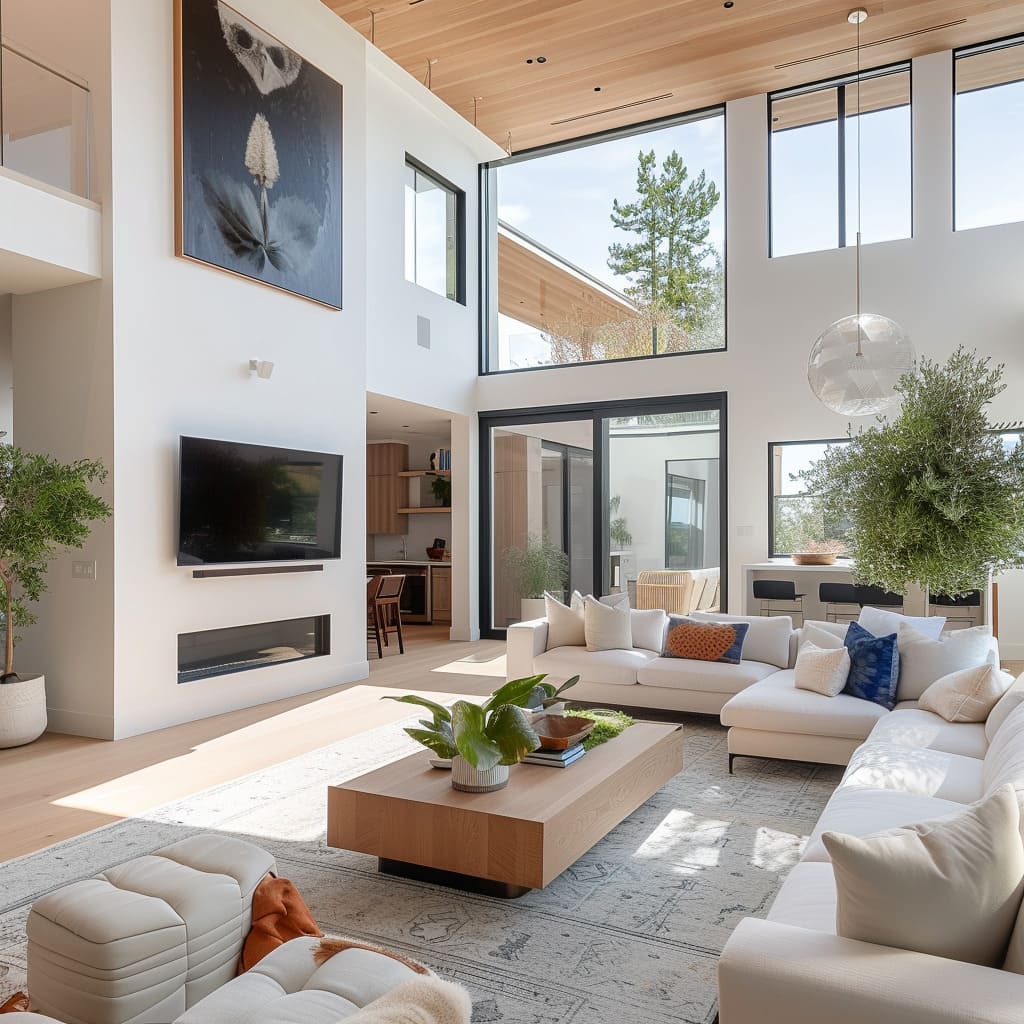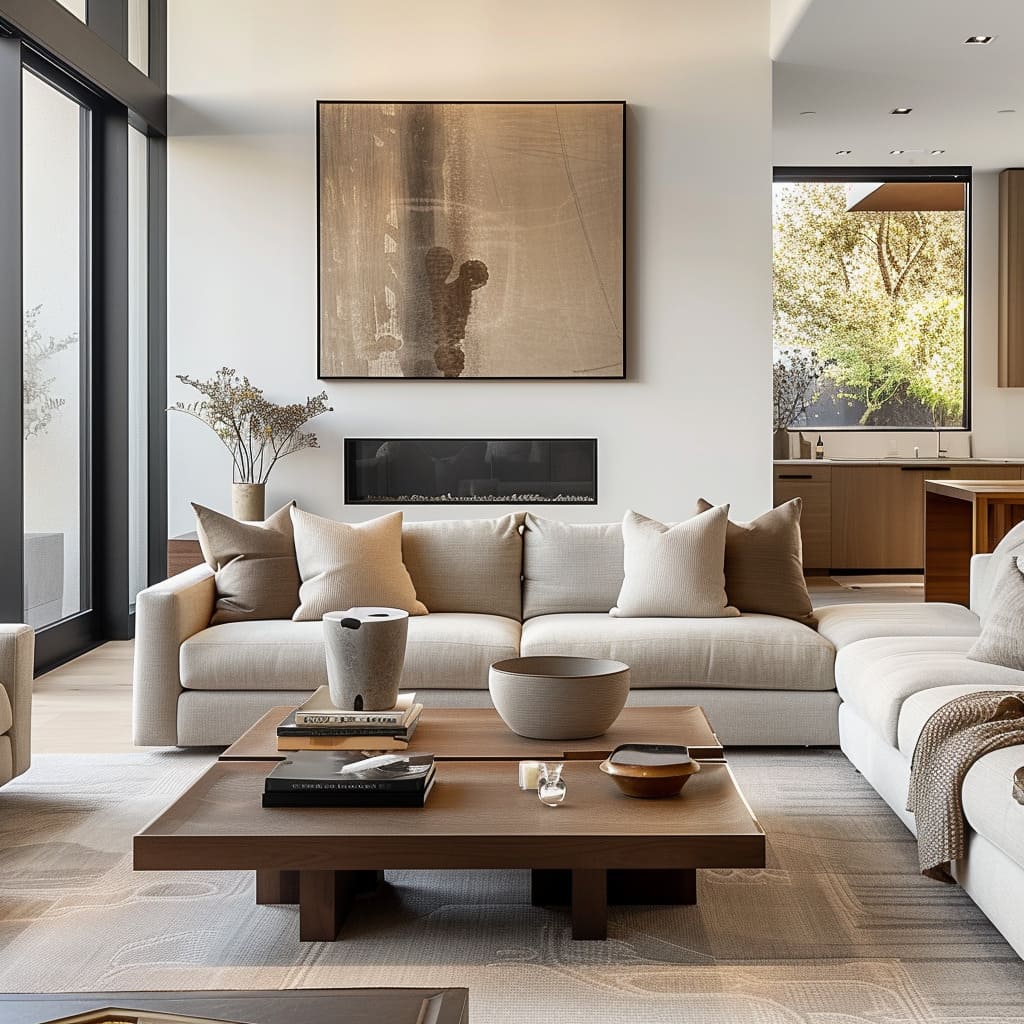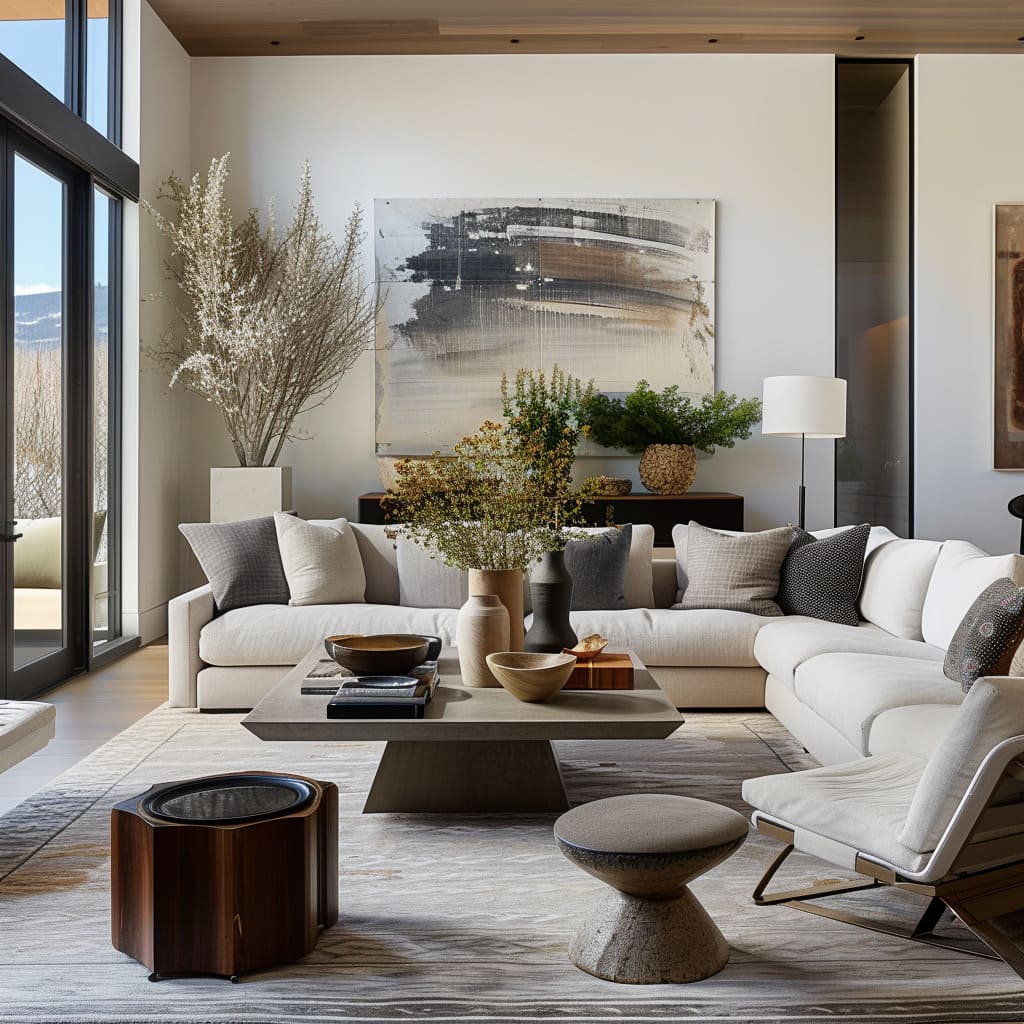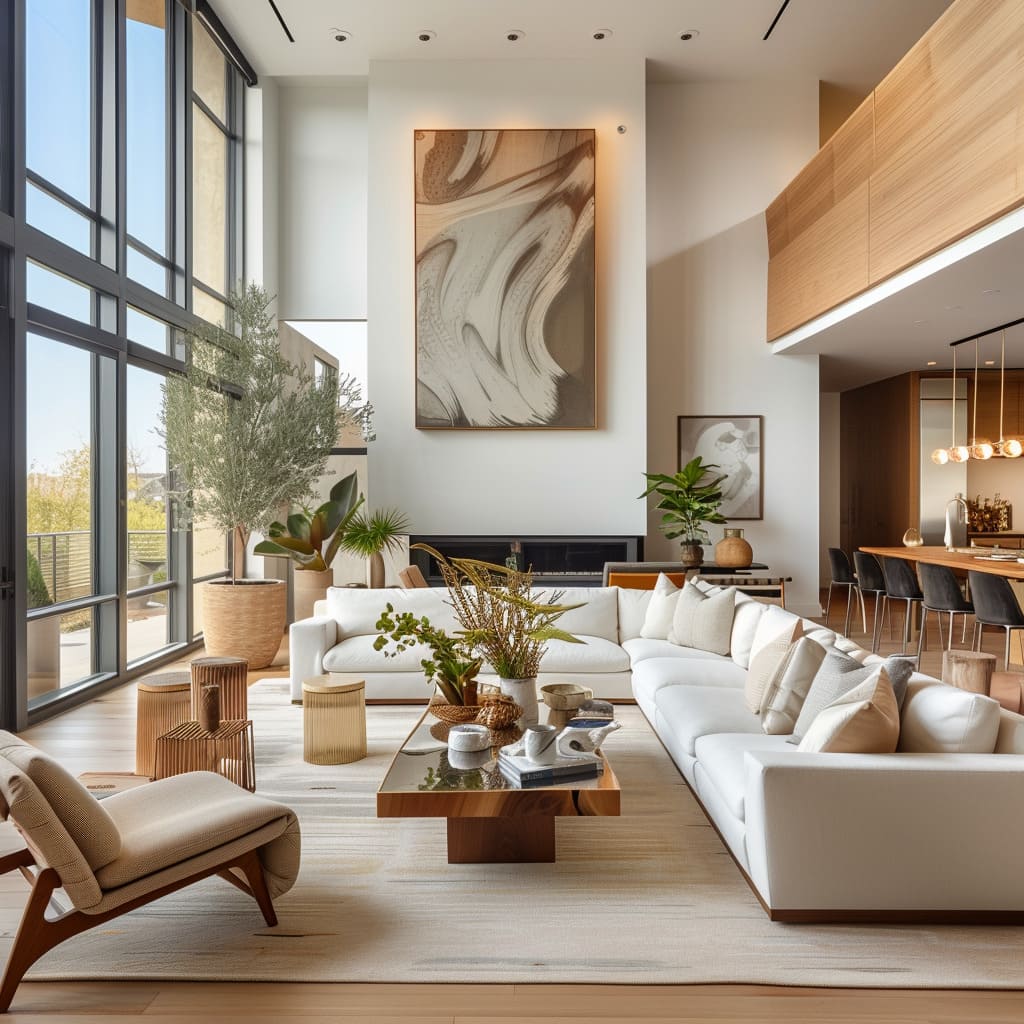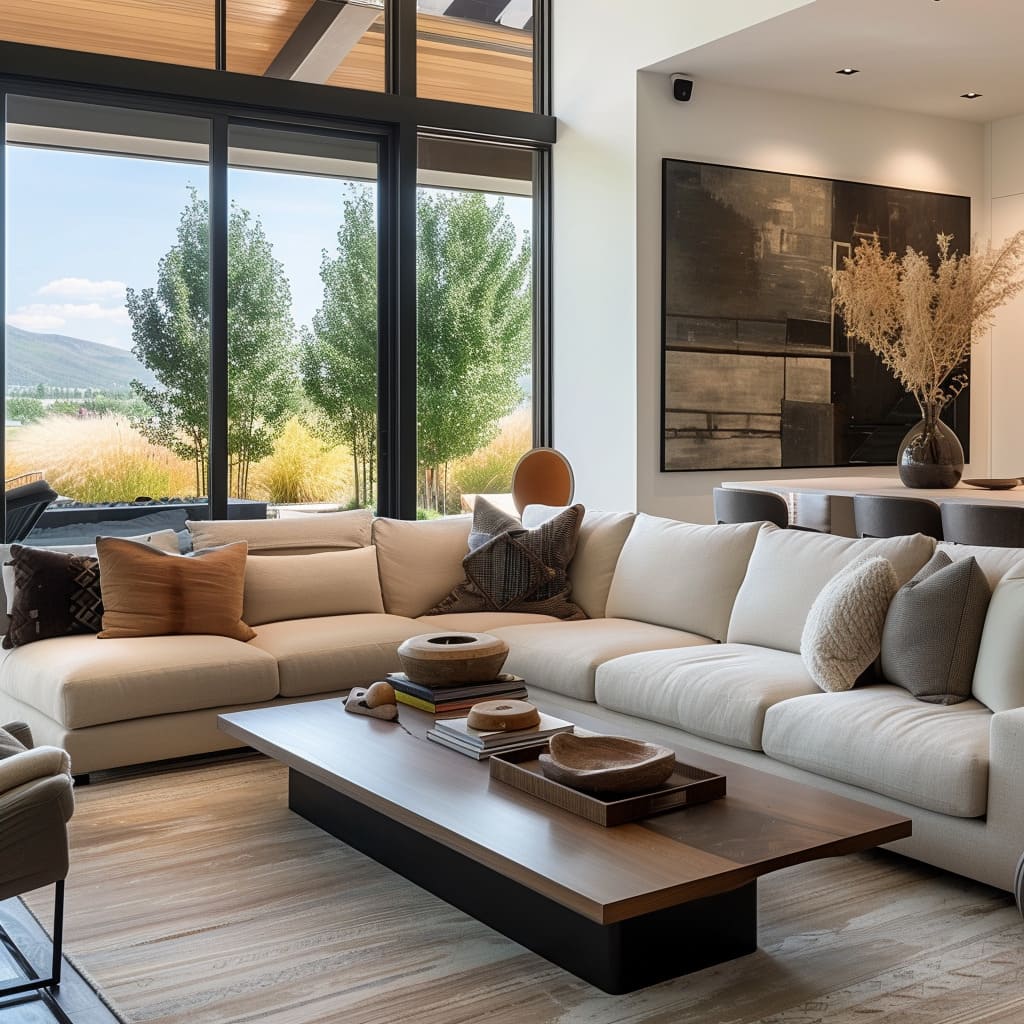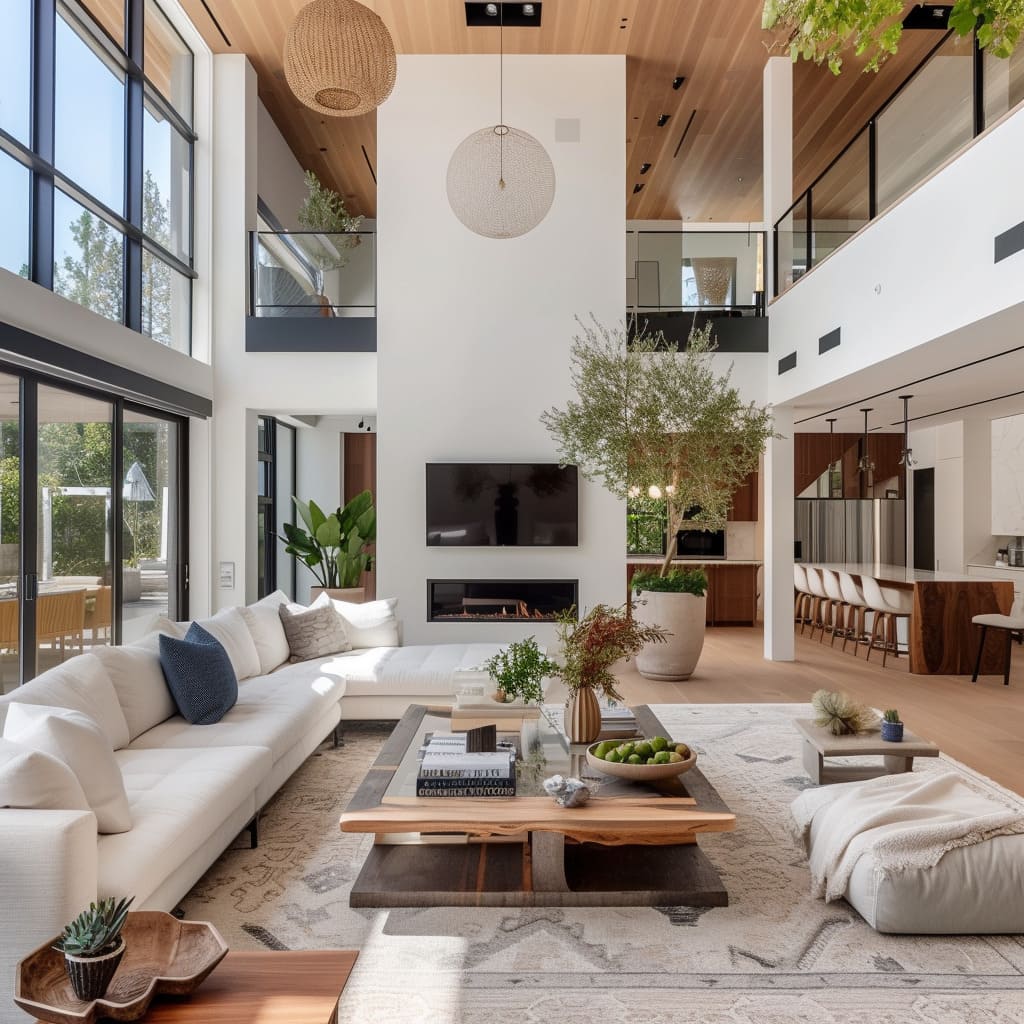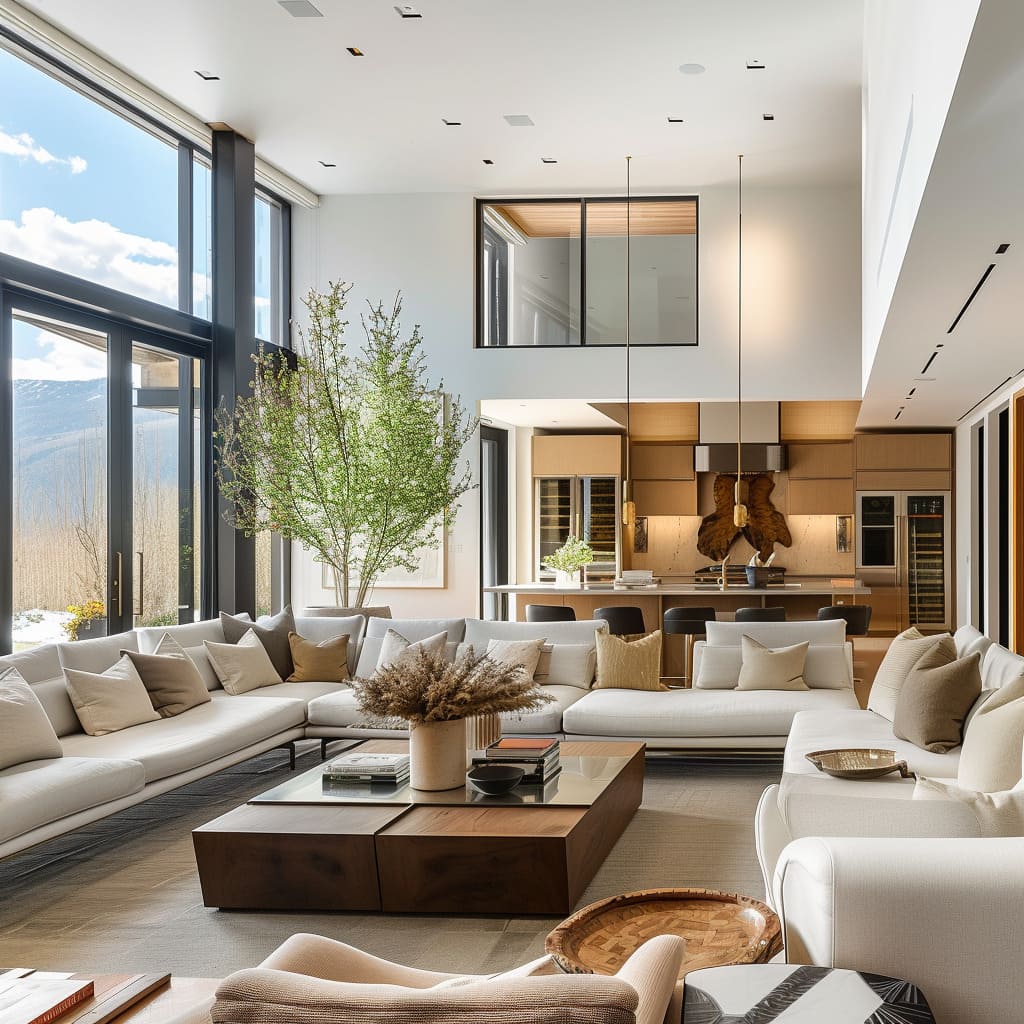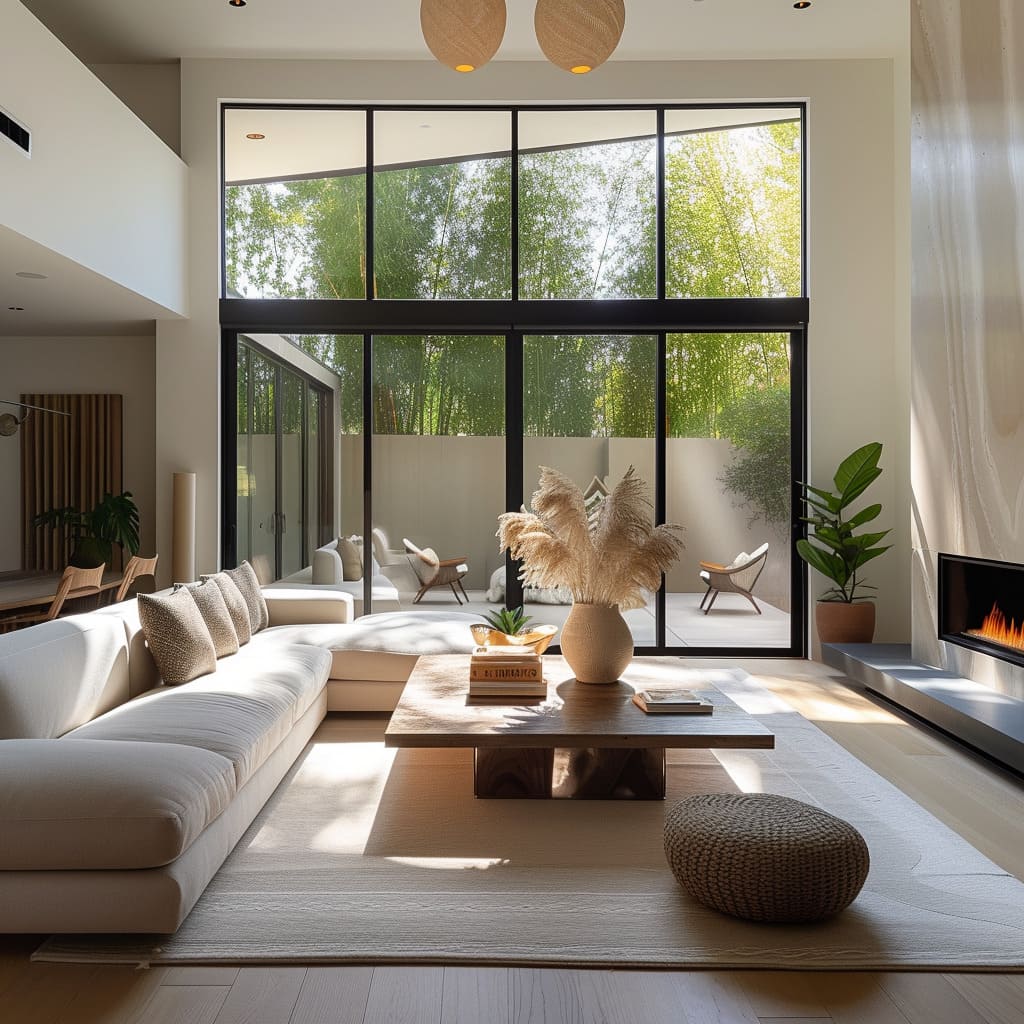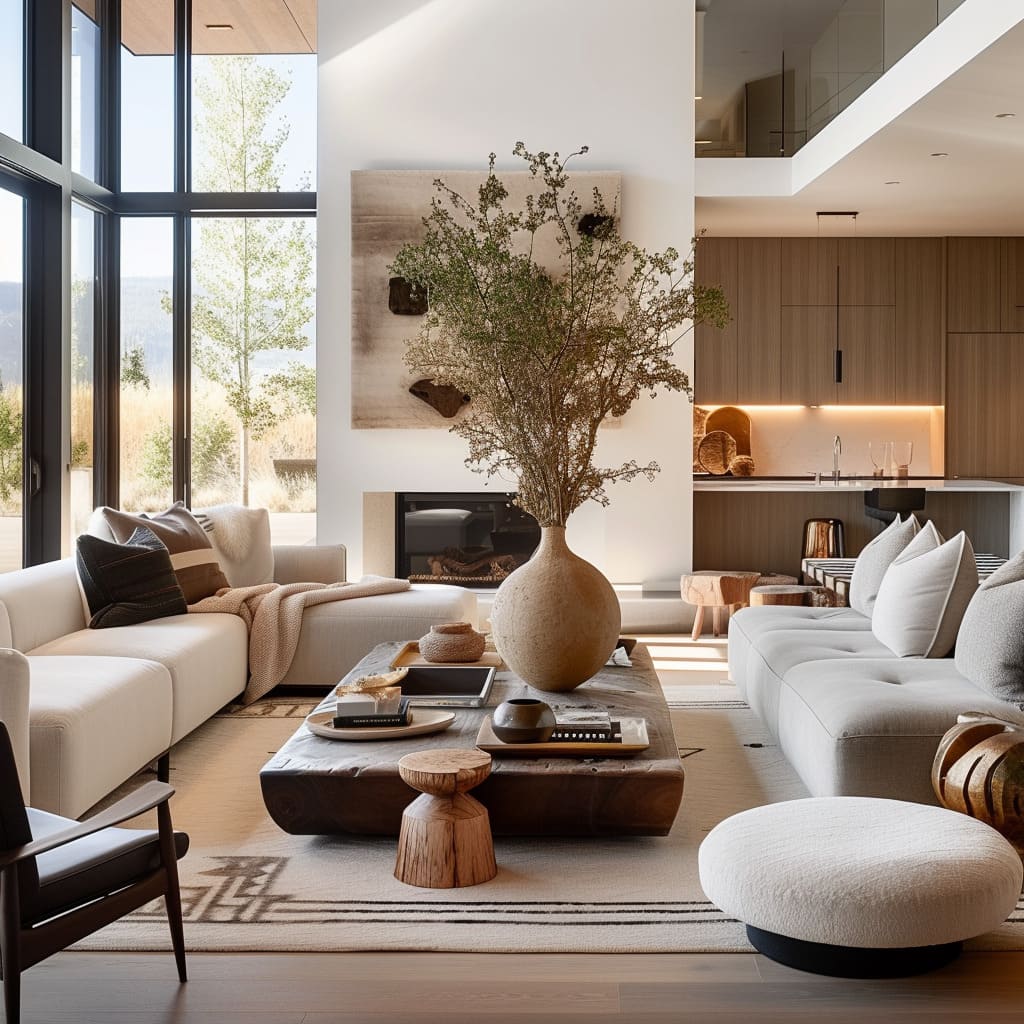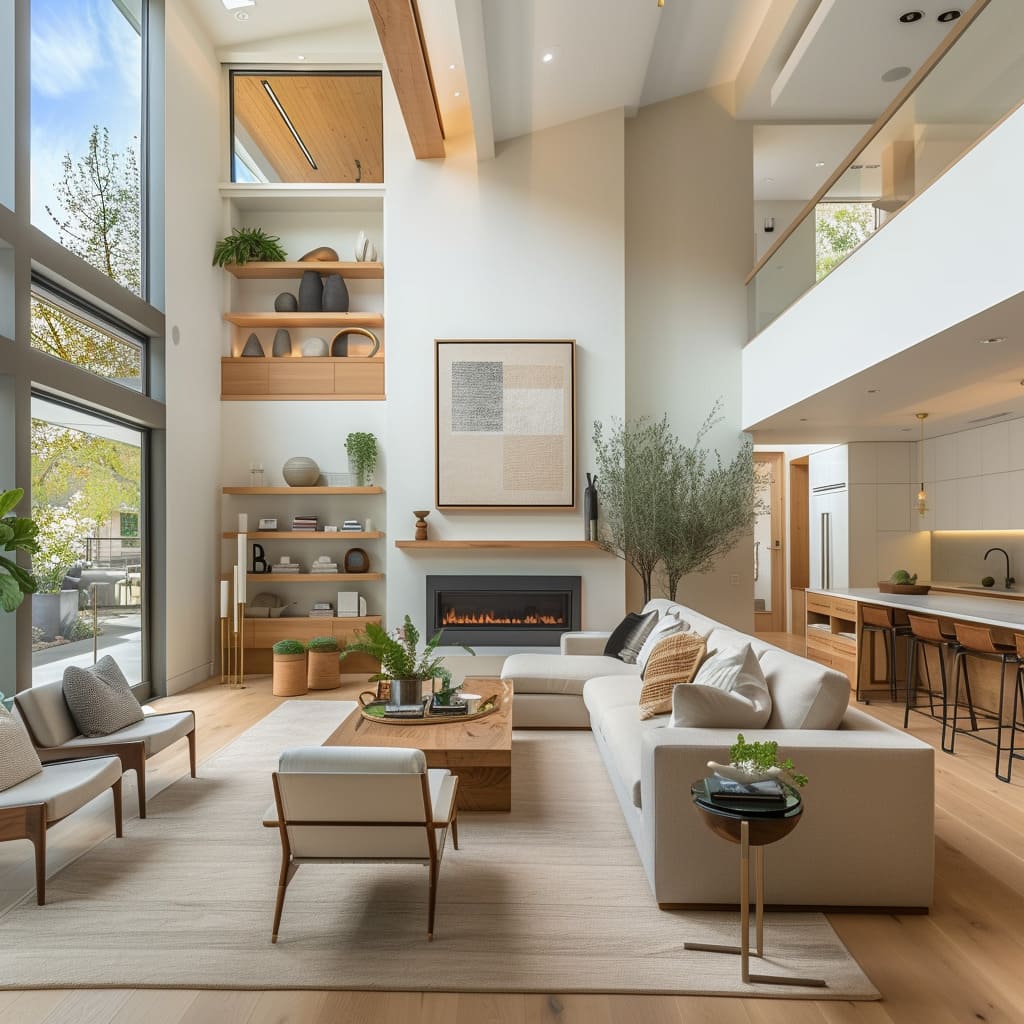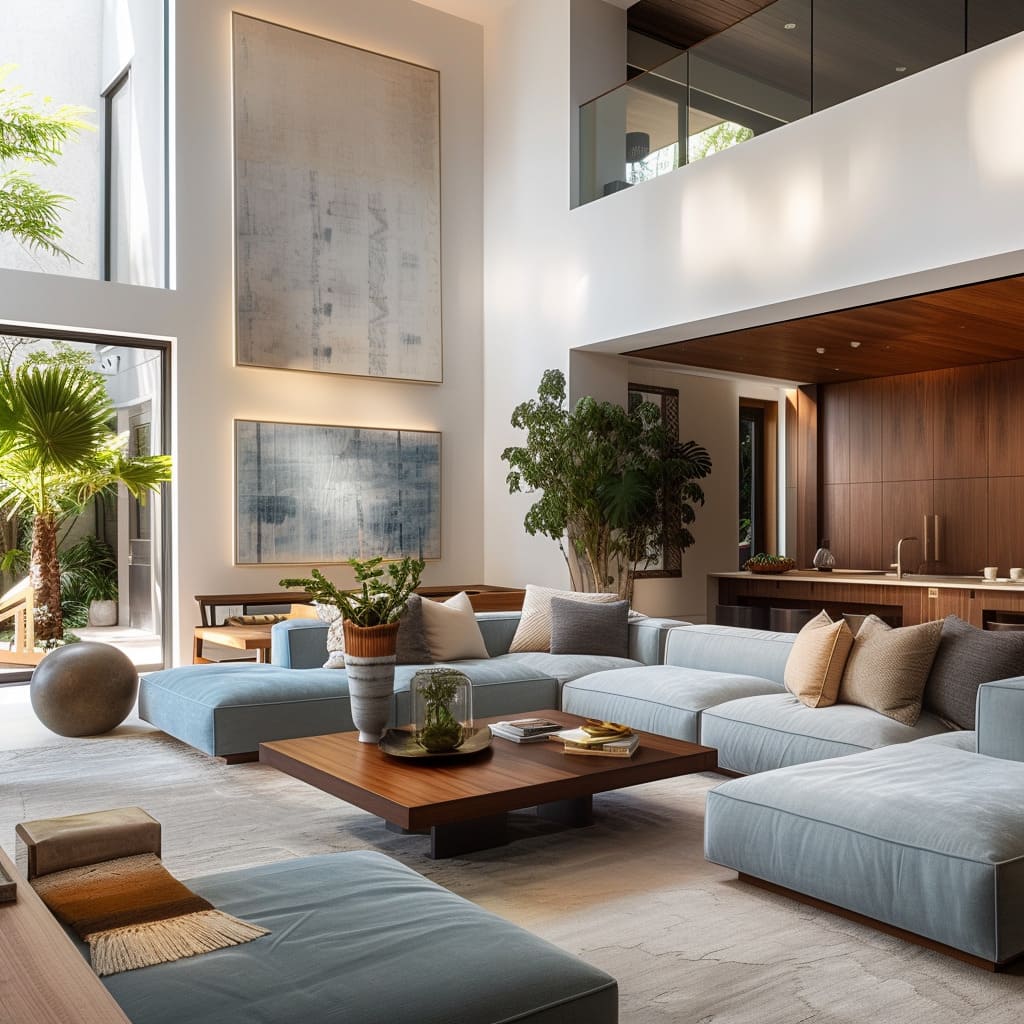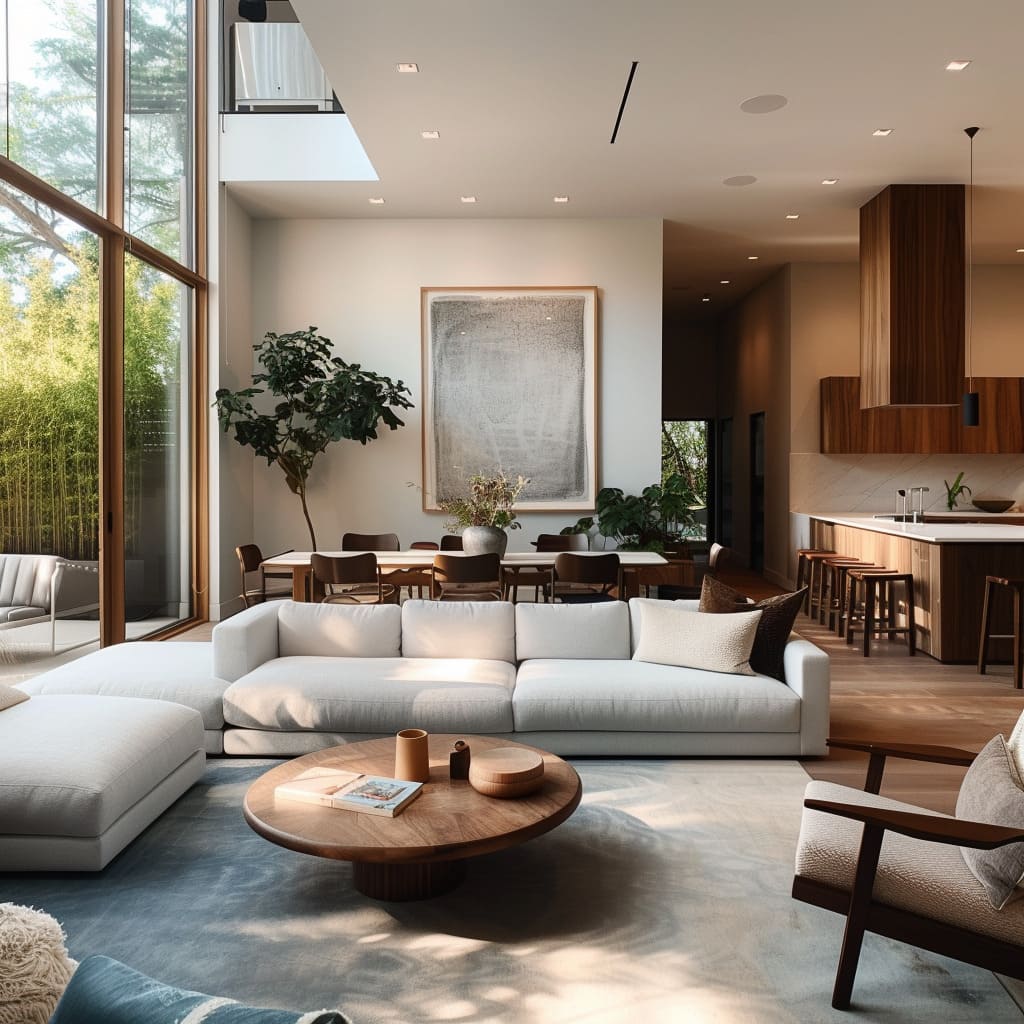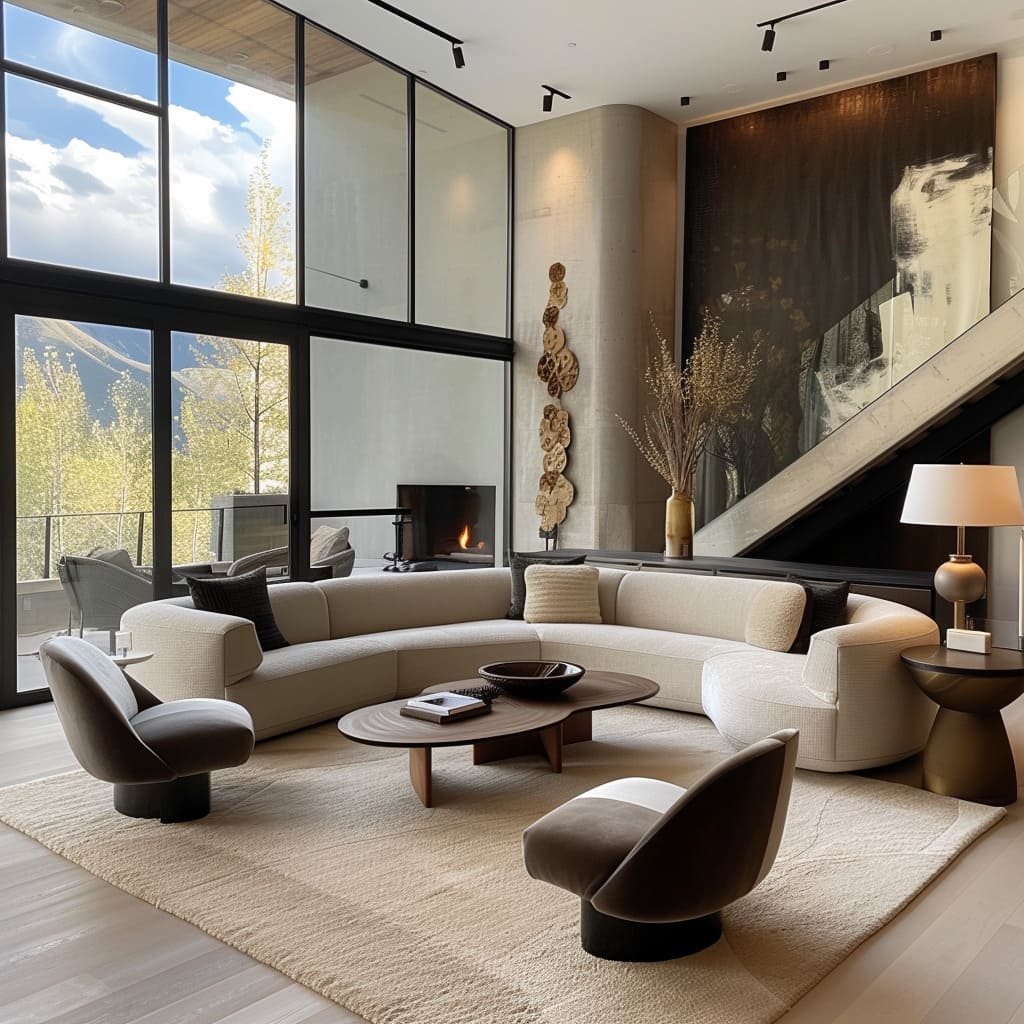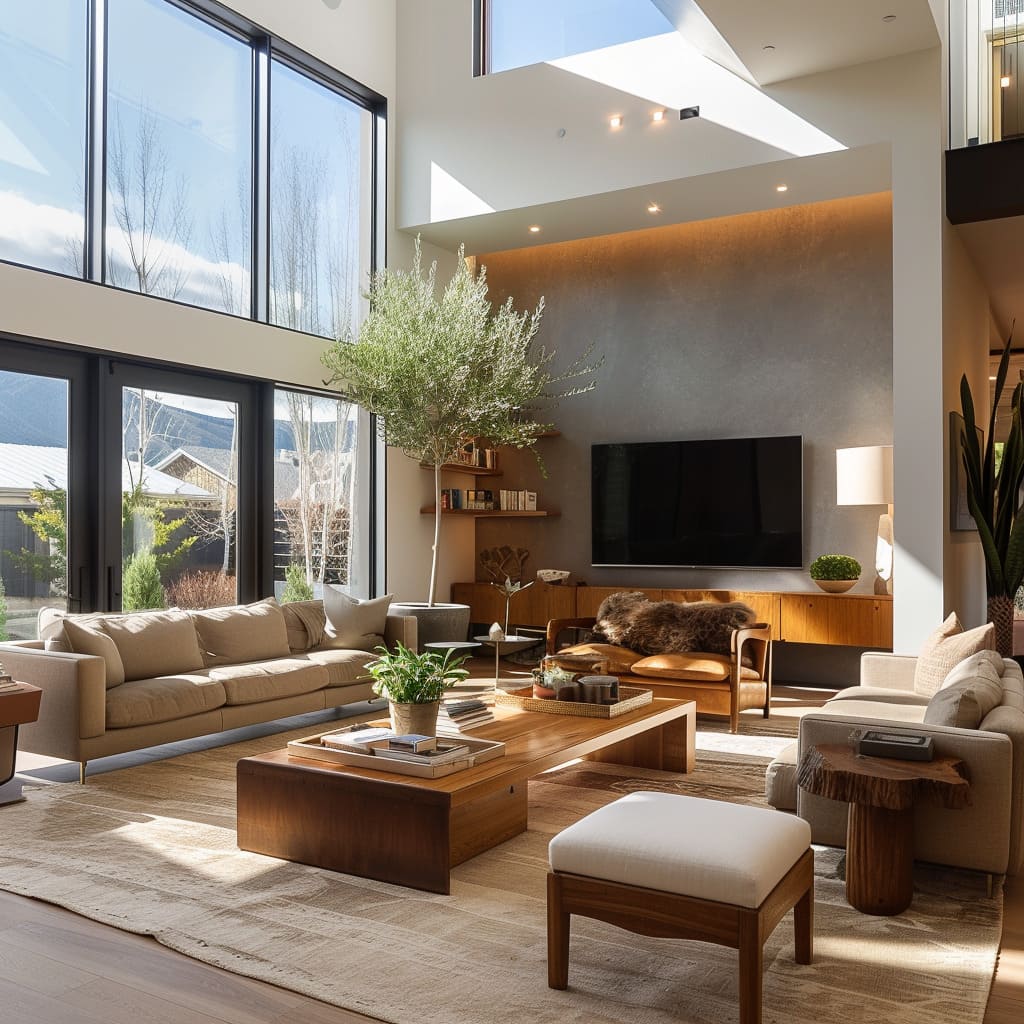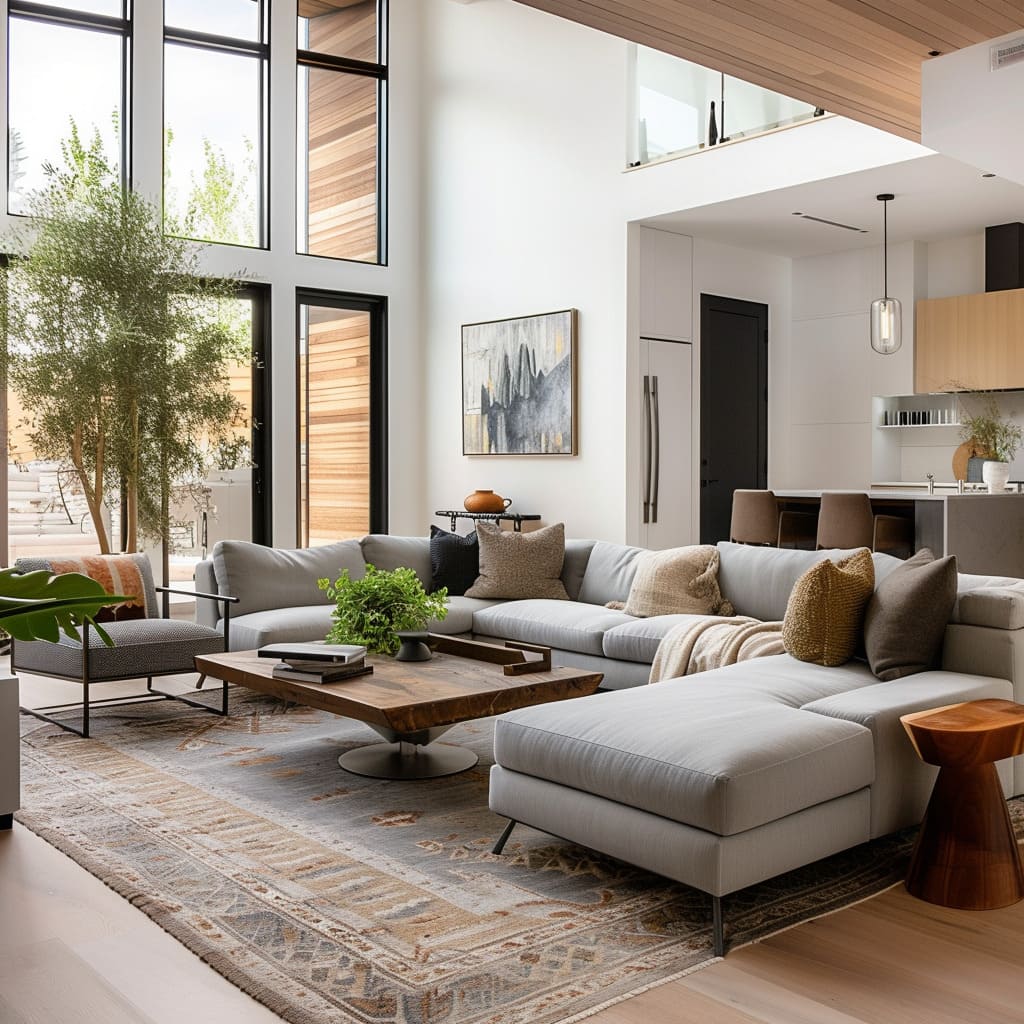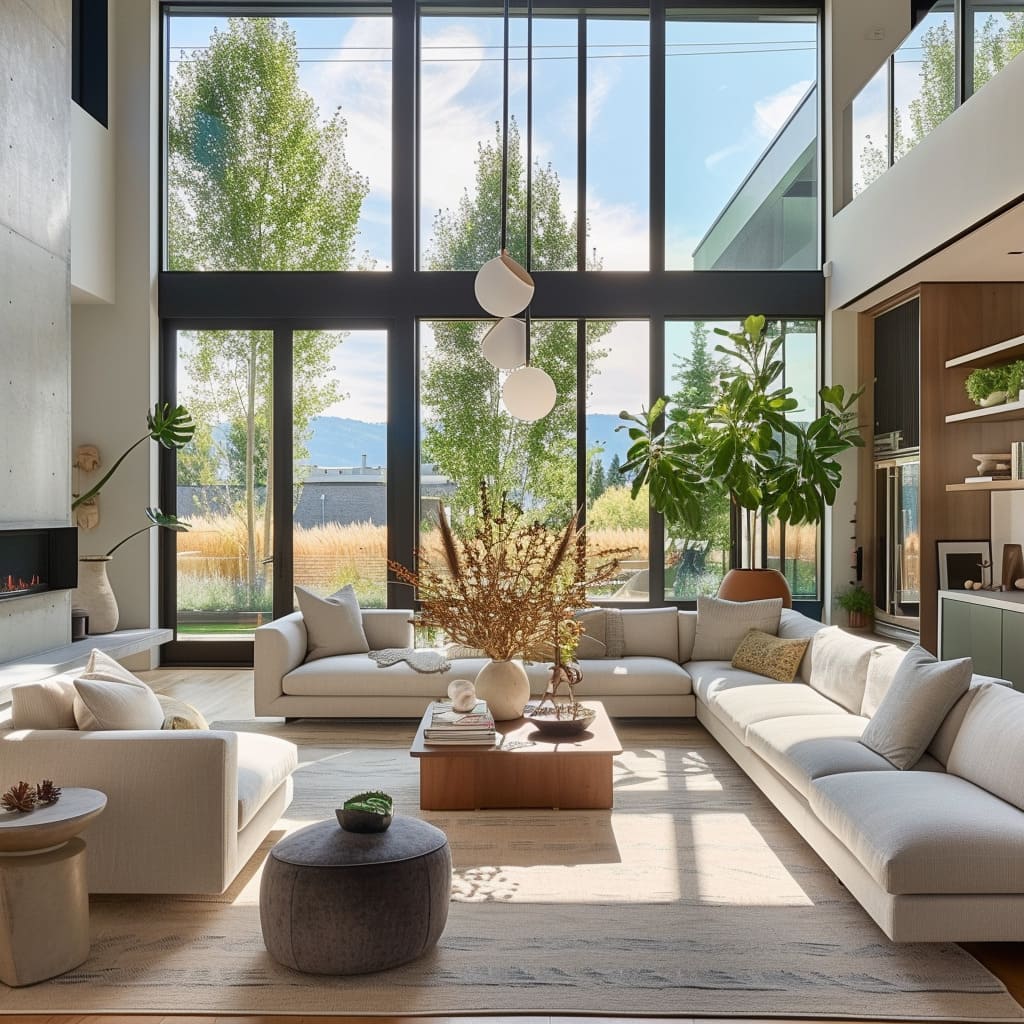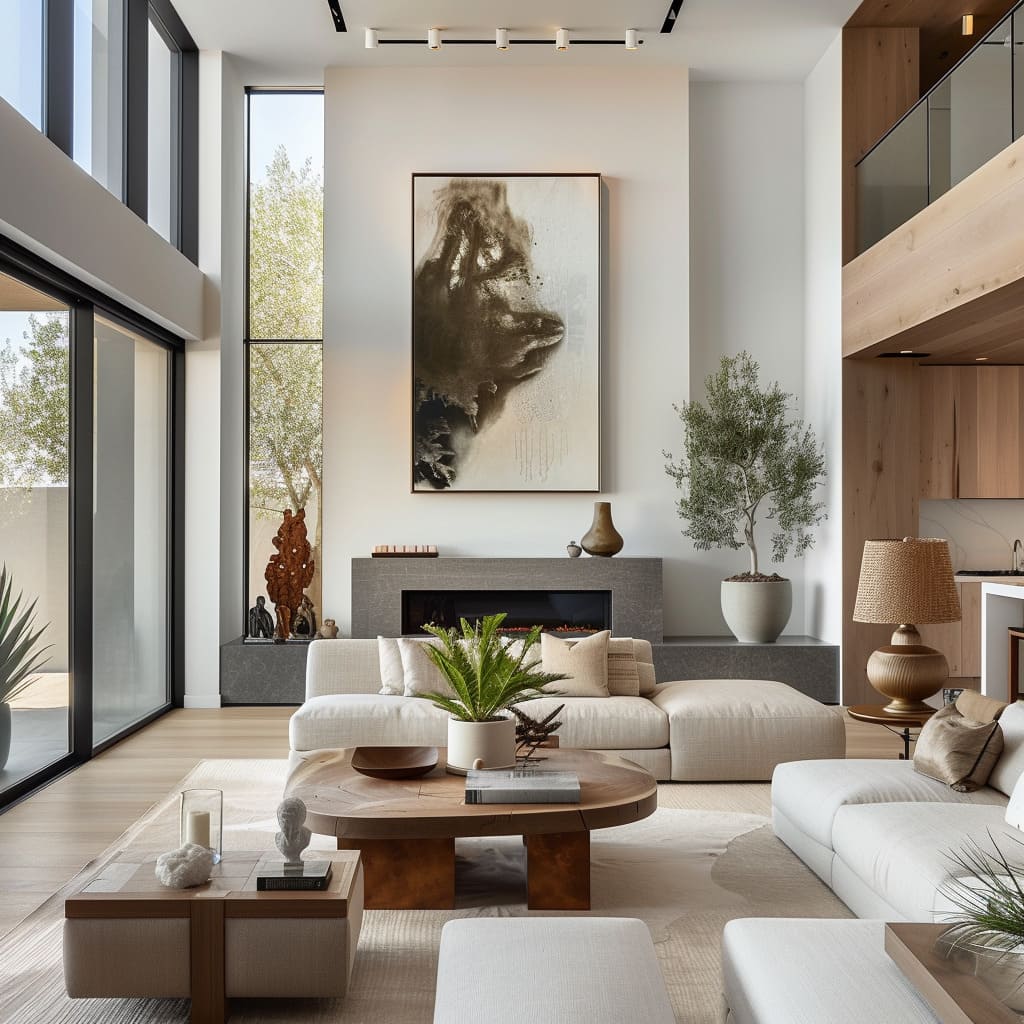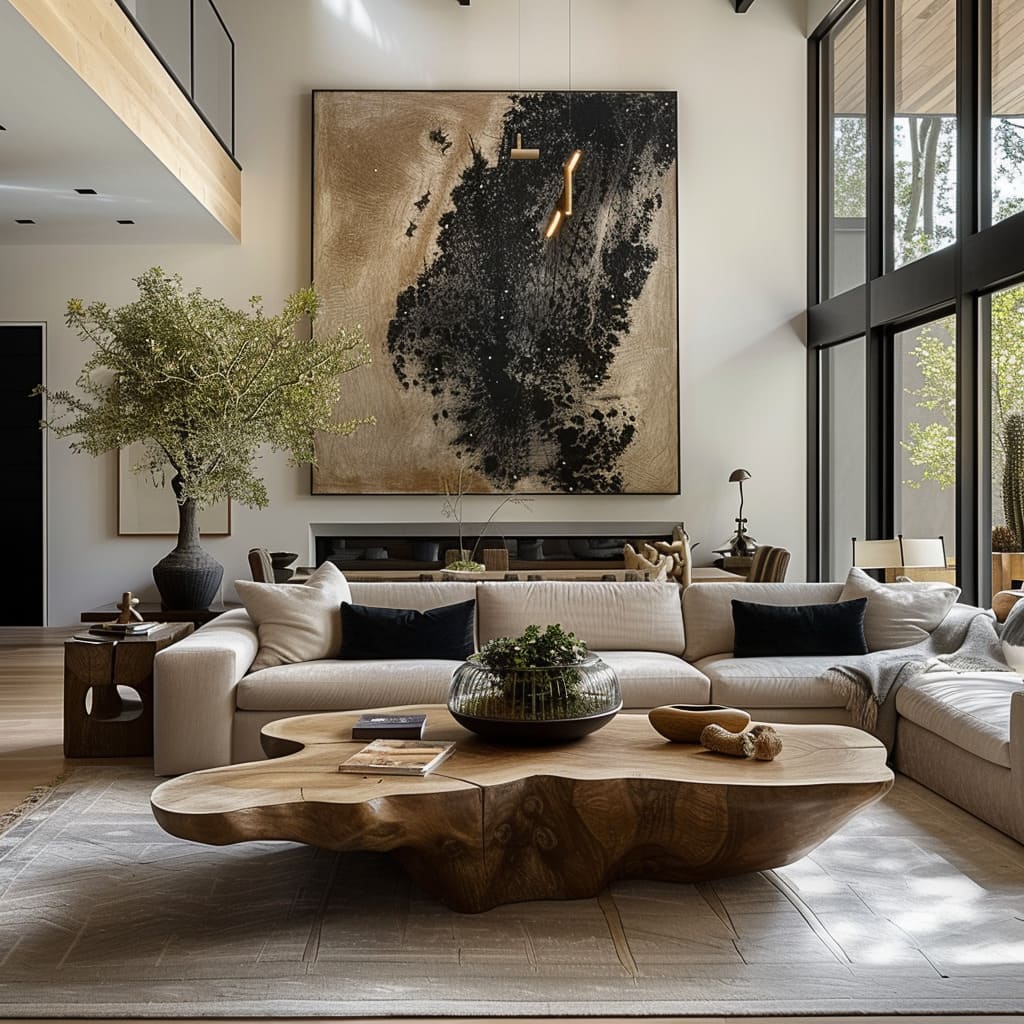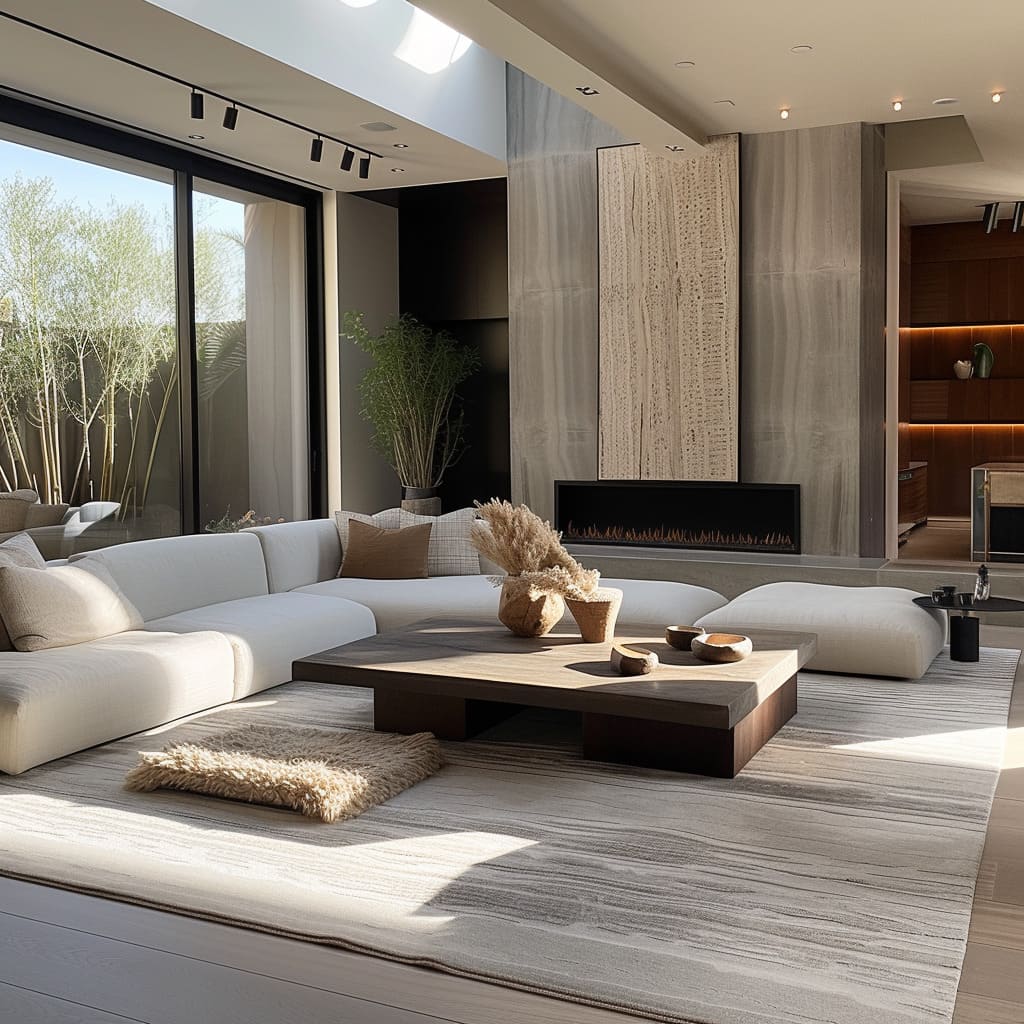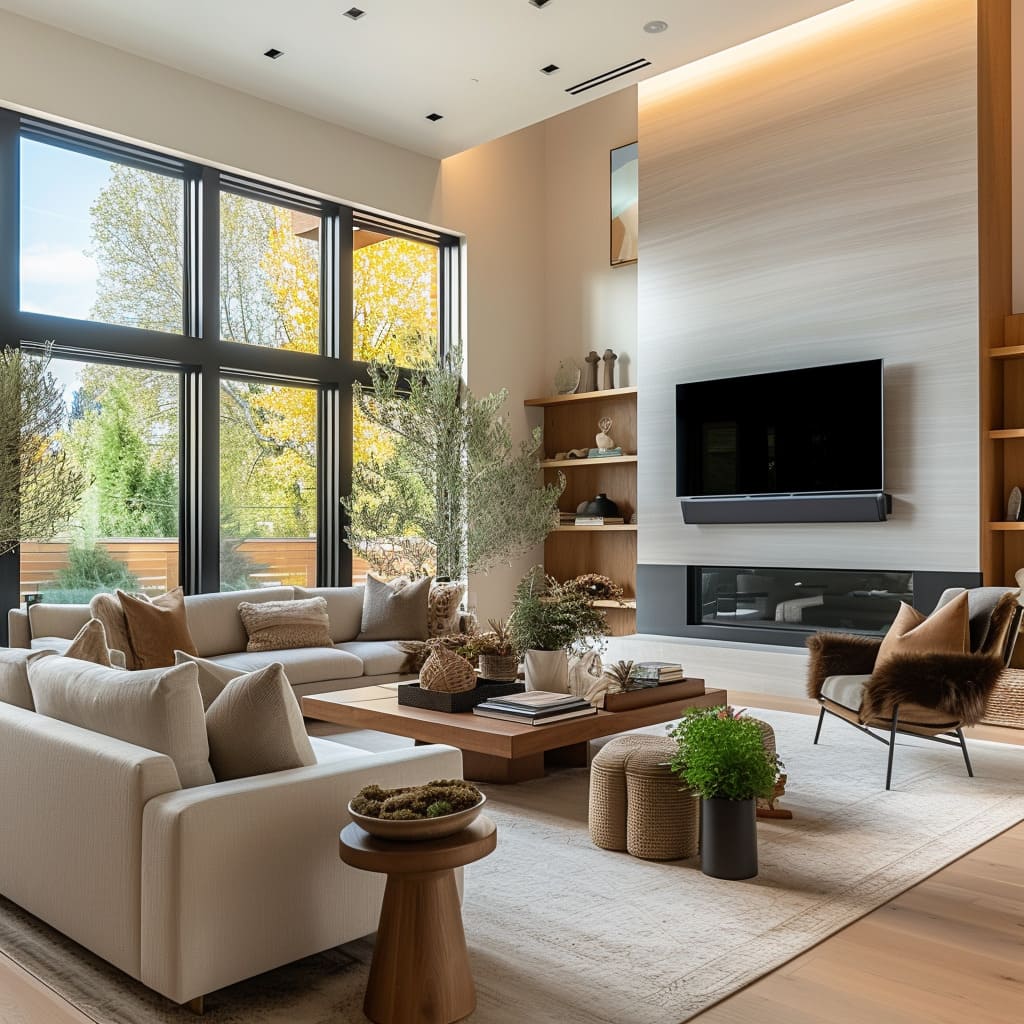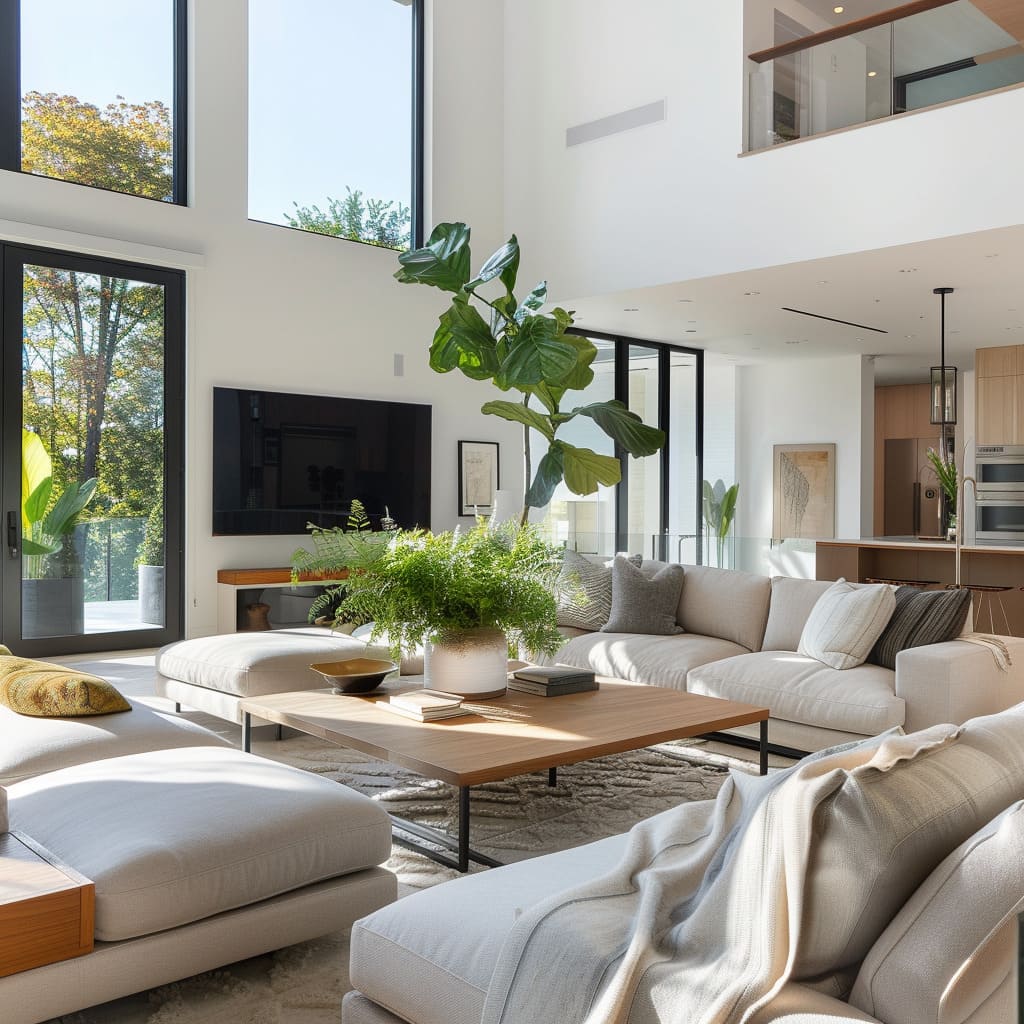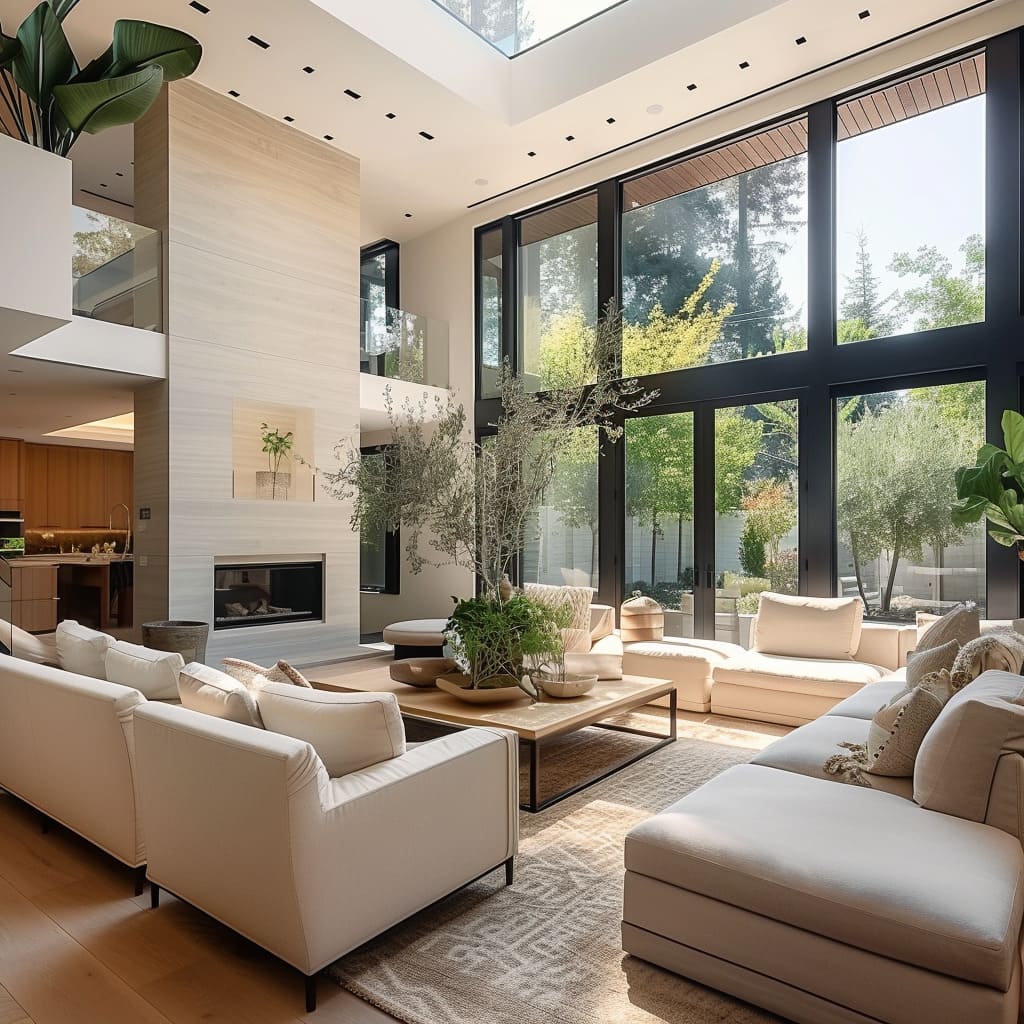We delve deep into the world of functional layouts in interior design. The arrangement of furniture in any space is not just about aesthetics; it’s about creating an environment that fosters comfort and encourages conversation.A sophisticated and well-thought-out approach to functional design is key in achieving this. In this article, we provide a detailed analysis of how furniture can be strategically placed to enhance both the functionality and comfort of a room.Join us as we explore the various aspects of functional layouts, offering practical tips and design principles that ensure your space is not only beautiful but also conducive to engaging interactions and relaxed living. Let’s unlock the secrets to creating spaces that are both visually appealing and impeccably functional.
Intimate Seating Arrangements
Intimate seating arrangements are a cornerstone of cozy and engaging living room designs. By placing sofas and chairs in a circular or semi-circular layout, it creates a warm, inviting atmosphere that is conducive to socializing and relaxation.This setup is especially effective in family rooms or spaces where interaction is a priority. The furniture pieces are chosen not only for their aesthetic appeal but also for comfort, ensuring that guests feel at ease during gatherings.Soft textures, plush cushions, and a harmonious color scheme add to the welcoming feel of these seating areas. To enhance this design in your own space, consider adding accent pieces like ottomans or side tables to provide additional comfort and utility.Additionally, incorporating elements like area rugs can help to visually define the seating area, making it feel more distinct and cozy within the larger room.
Zoning through Furniture
Zoning through furniture is an effective strategy in open-plan or larger living spaces, where creating distinct areas for specific activities is essential. Strategic placement of furniture like bookshelves, sofas, and console tables can help delineate different zones without disrupting the open feel of the space.For example, a bookshelf positioned perpendicular to a wall can create a separate reading nook, while still maintaining visual flow throughout the room.
In addition, using area rugs, lighting fixtures, and different color palettes can further define each zone while keeping a cohesive overall design. To effectively implement this concept, it’s important to maintain balance and avoid cluttering the space.Each zone should have a clear purpose and be arranged in a way that maximizes both function and aesthetic appeal. This approach not only enhances the usability of the space but also adds visual interest and depth to the overall design.
Modular Sofas
Modular sofas are a versatile and practical choice for dynamic living spaces. Their reconfigurable nature means that you can easily adapt the layout of your seating to suit various occasions, from a cozy movie night to a large social event.The individual sections of a modular sofa can be rearranged to create different shapes – such as L-shaped, U-shaped, or separate individual seating areas. This flexibility is particularly useful in multifunctional spaces or for those who enjoy refreshing their home’s layout frequently.The design of modular sofas often incorporates storage solutions or built-in side tables, adding to their functionality. To integrate modular sofas effectively into your interior, consider the size of the space and the usual number of occupants.
Central Coffee Tables
Large, central coffee tables serve as a communal surface for drinks, books, and decorative items, within easy reach of all seated guests, thus enhancing functionality and comfort. In the depicted living room, the coffee table is strategically placed at the heart of the seating arrangement, creating a focal point that invites interaction.It’s large enough to accommodate various items without feeling cluttered, balancing practicality with aesthetic appeal. To implement this feature in your interior, choose a table that complements the size of your seating area and reflects your personal style.Consider the table’s height and surface area to ensure it meets your functional needs while also serving as an attractive centerpiece.
Side Tables and Auxiliary Surfaces
The presence of side tables and additional surfaces near seating areas provides convenient spots for placing beverages or personal items, ensuring comfort and practicality for individuals. Side tables are positioned within arm’s reach of each seat, offering additional space for guests to place their drinks and belongings.
These tables not only enhance the functionality of the room but also contribute to its overall design. When incorporating this feature, select side tables that harmonize with the room’s decor and are proportionate to the adjacent furniture.The choice of material and design can add to the room’s character while fulfilling practical needs.
Walkways and Access
There is ample space around furniture pieces, providing clear walkways and ensuring easy access to seating without interrupting conversations or encroaching on personal space. The room layout demonstrates thoughtful spacing between furniture, allowing for smooth movement and a sense of openness.
This arrangement facilitates comfortable navigation and interaction within the space. To achieve this in your interior, ensure there is enough room for people to walk around comfortably without feeling cramped.Consider the flow of traffic and arrange furniture in a way that creates a balanced and inviting atmosphere.
Ergonomic Comfort
The furniture selected not only has an aesthetic appeal but also shows consideration for ergonomics, with supportive cushions and armrests, and varied seating depths to accommodate different body types and postures. This approach to furniture design ensures that comfort is not sacrificed for style, integrating features like adjustable backrests and seat heights to cater to individual preferences.
The ergonomic design is particularly evident in items such as office chairs and sofas, where prolonged use is expected. To enhance ergonomic comfort in your space, look for furniture with certified ergonomic design, ensure proper alignment with your body type, and consider accessories like lumbar support pillows for added comfort.
Multi-Functional Pieces
Some furniture pieces serve multiple purposes, such as ottomans that can be used as extra seating, coffee tables, or footrests, adding to the room’s functionality. These versatile items are ideal for small spaces or for those seeking a minimalist aesthetic, as they reduce the need for multiple pieces of furniture.
For instance, a sofa bed combines the utility of a sofa with the functionality of a guest bed, perfect for compact living spaces. To incorporate multi-functional pieces in your interior, focus on items that align with your lifestyle needs.Consider furniture with hidden storage, or invest in pieces that can be easily transformed or moved around to serve different purposes.
Layered Rugs
Area rugs are used to define seating areas further, adding a layer of comfort underfoot and contributing to the acoustics of the room by dampening sound. This technique involves overlapping different rug styles, textures, and colors to create a rich and dynamic flooring landscape.The varying textures and patterns of layered rugs can add depth and interest to a space, making it feel more inviting and cozy.
To achieve this in your interior, consider the color scheme and design of your room. Choose rugs with complementary colors and varied textures.Start with a larger, neutral base rug to ground the space, and then add smaller, more decorative rugs on top. Remember to consider the practicality of cleaning and maintaining these rugs, especially in high-traffic areas.
Lighting for Atmosphere and Function
Strategic lighting with a mix of ambient, task, and accent lights ensures that the space is well-lit for various activities, from reading to relaxing. Ambient lighting provides overall illumination, task lighting focuses on specific areas for activities like reading or cooking, and accent lighting highlights architectural features or artwork.
This blend of lighting types can transform the mood and functionality of a room. To implement this in your home, start by identifying the key areas where you perform specific tasks and ensure they are well-lit.Use dimmers where possible to adjust the ambiance. Choose light fixtures that complement your interior design, such as sleek, modern lamps for a contemporary space or ornate chandeliers for a more traditional setting.Remember, the color temperature of the bulbs can also impact the atmosphere, with warmer tones creating a cozy feel and cooler tones being better for concentration and focus.
Visual Balance
The arrangement of furniture is visually balanced, which creates a harmonious atmosphere conducive to relaxation and ease of movement. This balance is achieved by strategically placing furniture and décor in a way that evenly distributes visual weight across the room.It involves considering the size, color, and texture of various elements to create a sense of equilibrium. Symmetry is often employed, with furniture pieces of similar size and shape placed opposite each other.However, asymmetrical arrangements can also achieve balance by using contrasting pieces that complement each other.
To create visual balance in your space, consider the scale and proportion of your furniture in relation to the room. Use a mix of large and small items, and balance bold colors or patterns with more subdued elements.Ensure there is enough space around furniture for easy movement, and use décor to fill empty spaces thoughtfully.
Accessibility
The seating is arranged in a way that all the entertainment amenities like television or fireplace can be enjoyed without obstruction, adding to the room’s functionality. This arrangement considers the line of sight from different seating positions, ensuring an unobstructed view of the TV or the warmth of the fireplace.It also includes maintaining appropriate distances between seating and entertainment sources for both comfort and safety.
For optimal accessibility in your interior, arrange seating in a semi-circular or U-shaped layout to ensure that all seats have a good view. Consider the height of your furniture and the positioning of your TV or fireplace to avoid neck strain.Additionally, ensure there is enough space between furniture for easy movement, especially for those with mobility challenges. This thoughtful arrangement enhances the enjoyment of the space and makes it welcoming for all occupants.
Shared Spaces
The open-plan designs often incorporate dining or kitchen areas into the layout, promoting a more communal living experience where activities can be shared. These spaces are designed to foster interaction and connectivity among family members or guests, allowing for simultaneous cooking, dining, and socializing.The seamless transition between areas is usually achieved through consistent flooring and a cohesive color scheme.
In such a layout, the kitchen often becomes the heart of the home, with a central island or bar serving as a focal point for gathering. To effectively create a shared space in your home, consider using multi-functional furniture and ensuring a clear line of sight between areas.Use lighting and rugs to subtly define different zones without erecting barriers. Opt for a cohesive décor theme throughout to maintain a sense of unity.
Personal Space
Despite the emphasis on sociability, the layouts also allow for personal space with the inclusion of single seating options like chaise lounges or armchairs. These individual seating areas offer a private retreat within a larger communal space, perfect for reading, relaxing, or enjoying some alone time.The strategic placement of these pieces can create cozy nooks or quiet corners, even in an open-plan layout.
For instance, a chaise lounge placed near a window with a side table and lamp creates a perfect personal reading spot. To incorporate personal space in your interior, identify areas in your living space that can be dedicated to solitary activities.Consider the lighting, comfort, and privacy of these spots. Adding elements like a small bookshelf, a comfortable throw, or a unique piece of art can make these areas more inviting and personalized.
Interactive Decor
The placement of decorative items such as books and interactive art pieces on the coffee tables invites guests to engage with the space and each other. This approach to decor not only enhances the aesthetic appeal of the space but also encourages interaction and conversation among those in the room.Interactive elements can include intriguing sculptures, tactile textiles, or even technology-integrated furniture that invite exploration and use. To effectively incorporate interactive decor in your space, select items that reflect your interests and hobbies.Arrange them in accessible places where guests can easily view or handle them. Consider the practicality and safety of these items, especially in homes with children or pets.Interactive decor should add to the ambiance of the room while also providing a topic for conversation or a pleasant sensory experience.
Cohesive Color Scheme
The cohesive color scheme throughout the furniture and decor creates a unified space that feels orderly and intentional, contributing to a serene environment. This unified approach to color can make a room feel larger and more harmonious, as it ties different elements together seamlessly.The color palette often includes a mix of neutral tones with a few accent colors to add depth and interest. To create a cohesive color scheme in your interior, start by selecting a base color that you love and that suits the function of the space.Then, choose complementary or analogous colors for your accents. Use these colors consistently across different elements like furniture, wall paint, and decor.Remember to consider the lighting in your room, as it can significantly affect how colors appear.
Consistent Style
The furniture styles are consistent within each space, creating a cohesive look that enhances the room’s overall functionality. This consistency in style can range from modern and minimalist to traditional or eclectic, depending on personal preference.The key is that all pieces harmonize in design, creating a visually pleasing and functional environment. This includes similar lines, forms, and materials throughout the furniture and decor.To achieve a consistent style in your interior, first define your preferred aesthetic. Research different styles and select one that resonates with you and suits your lifestyle.When purchasing furniture and decor, keep this style in mind to ensure that new additions complement the existing pieces. Don’t be afraid to mix different periods or trends, as long as they align with the overall style and color palette of the room.
In conclusion, this comprehensive exploration of functional layouts in interior design has revealed the intricate balance between aesthetics and practicality. From intimate seating arrangements that foster social interaction and comfort, to the clever zoning of open-plan spaces for distinct yet interconnected activities, each aspect of design plays a pivotal role in creating a harmonious living environment.Modular sofas and central coffee tables exemplify versatility and communal engagement, while side tables and auxiliary surfaces add to the practicality and convenience of the space.
The importance of maintaining clear walkways and ensuring ergonomic comfort cannot be overstated, as they contribute significantly to the overall functionality and accessibility of the room. Multi-functional pieces, layered rugs, and strategic lighting further enhance both the utility and ambiance of a space.
Moreover, the emphasis on a cohesive color scheme and consistent style underscores the need for a thoughtful and unified approach to interior design. These elements, combined with interactive decor and consideration for personal spaces, result in a living environment that is not only aesthetically pleasing but also deeply attuned to the needs of its occupants.
Ultimately, the key takeaway from our analysis is that a well-designed space is one that seamlessly integrates beauty with functionality, catering to both the communal and individual needs of those who inhabit it. By applying these principles, one can create a living space that is not just a house, but a comfortable, inviting, and engaging home.



